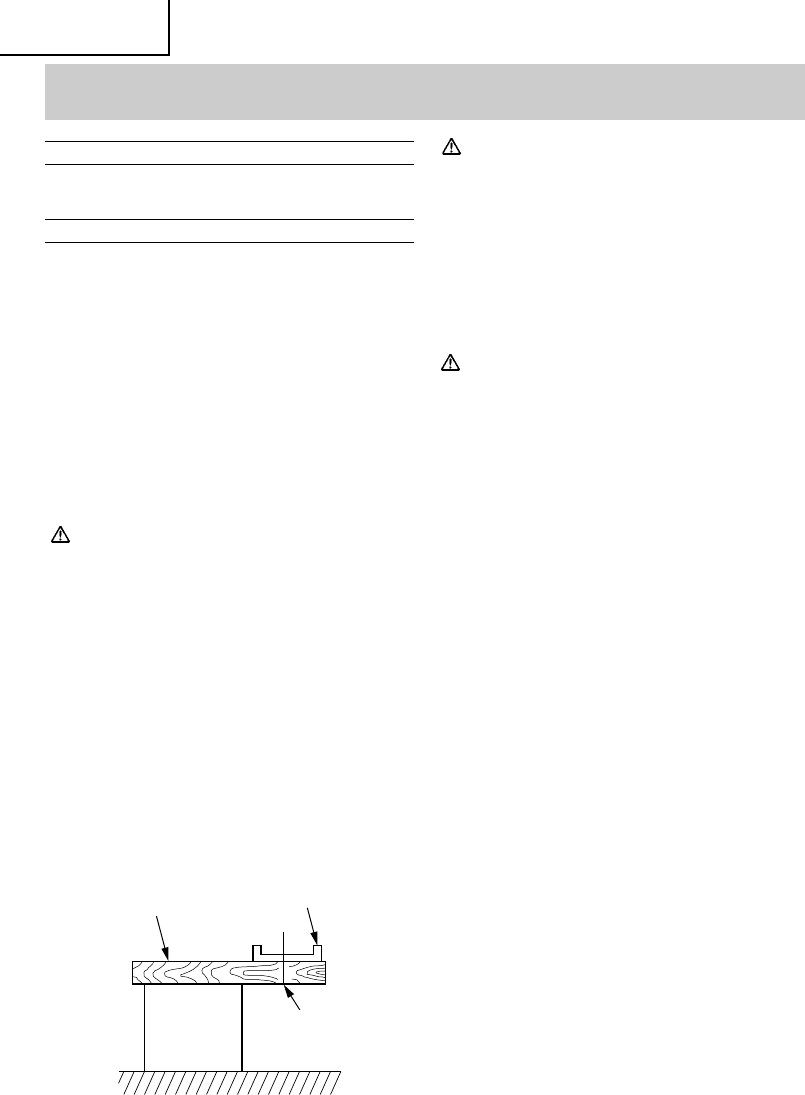
English
8
CAUTION:
To avoid possible accident, always ensure that the
portion of work piece remaining after cutting is
securely anchored or held in position.
7. Check if lever (A)s are tightened.
If the lever (A) to adjust cutting depth (Fig. 3) and
lever (A) to adjust angle of inclination (Fig. 4) are
loose, injury can result. Make sure that they are
tightened securely.
8. Check performance of safety cover
WARNING:
Make absolutely sure that the safety cover is not
fixed. Also, check and see if it can move smoothly.
If the saw blade is kept exposed injury can result.
The lower guard (refer to Fig. 1) serves to protect
your body from coming into contact with the saw
blade. Make absolutely certain that the cover
smoothly performs to cover the saw blade. If the
safety cover should not move smoothly, never use
it without repairing it.
In such a case, get in touch with the store where
you bought the circular saw or the HITACHI
Authorized Service Center for necessary repair.
9. Eye protection
When you use the tool, make certain that you wear
eye protection.
10. Check if saw blade is tightened
Refer to [mounting and dismounting the saw
blade] in Page 12, and make sure that the flange
bolt is tightened securely.
11. Check for proper operation of the brake.
Your saw has an automatic electric brake which is
designed to stop the blade from coasting in about
3 seconds, after you release the trigger switch. It
is useful when making certain cuts in wood where
a coasting blade would result a wide imprecise cut.
Occasionally, under certain conditions, the brake
will not function properly and won't stop the saw
in the 3 seconds discussed above.
If this condition persists, turn the saw on and off
four or five times. If the brake still does not stop
the blade in about 3 seconds, the problem may be
worn brushes. Replace the brushes and try the saw
again. If the problem still persists, have the tool
serviced at a HITACHI AUTHRIZED SERVICE
CENTER.
ASSEMBLY AND OPERATION
APPLICATIONS
⅜
Cutting Various types of wood.
PRIOR TO OPERATION
1. Power source
Ensure that the power source to be utilized
conforms to the power source requirements
specified on the product nameplate.
2. Power switch
Ensure that the switch is in the OFF position. If the
plug is connected to a receptacle while the switch
is in the ON position, the power tool will start
operating immediately and can cause serious injury.
3. Extension cord
When the work area is far away from the power
source, use an extension cord of sufficient
thickness and rated capacity. The extension cord
should be kept as short as practicable.
WARNING:
Damaged cord must be replaced or repaired.
4. Check the receptacle
If the receptacle only loosely accepts the plug, the
receptacle must be repaired. Contact a licensed
electrician to make appropriate repairs.
If such a faulty receptacle is used, it may cause
overheating, resulting in a serious hazard.
5. Confirming condition of the environment:
Confirm that the work site is placed under appropriate
conditions conforming to prescribed precautions.
6. Prepare a wooden workbench (Fig. 2)
Since the saw blade will extend beyond the lower
surface of the work piece, place the work piece on
a workbench when cutting. If a square block is
utilized as a workbench, select level ground to
ensure it is properly stabilized. An unstable
workbench will result in hazardous operation.
Fig. 2
Work piece
Base
Saw blade
Workbench


















